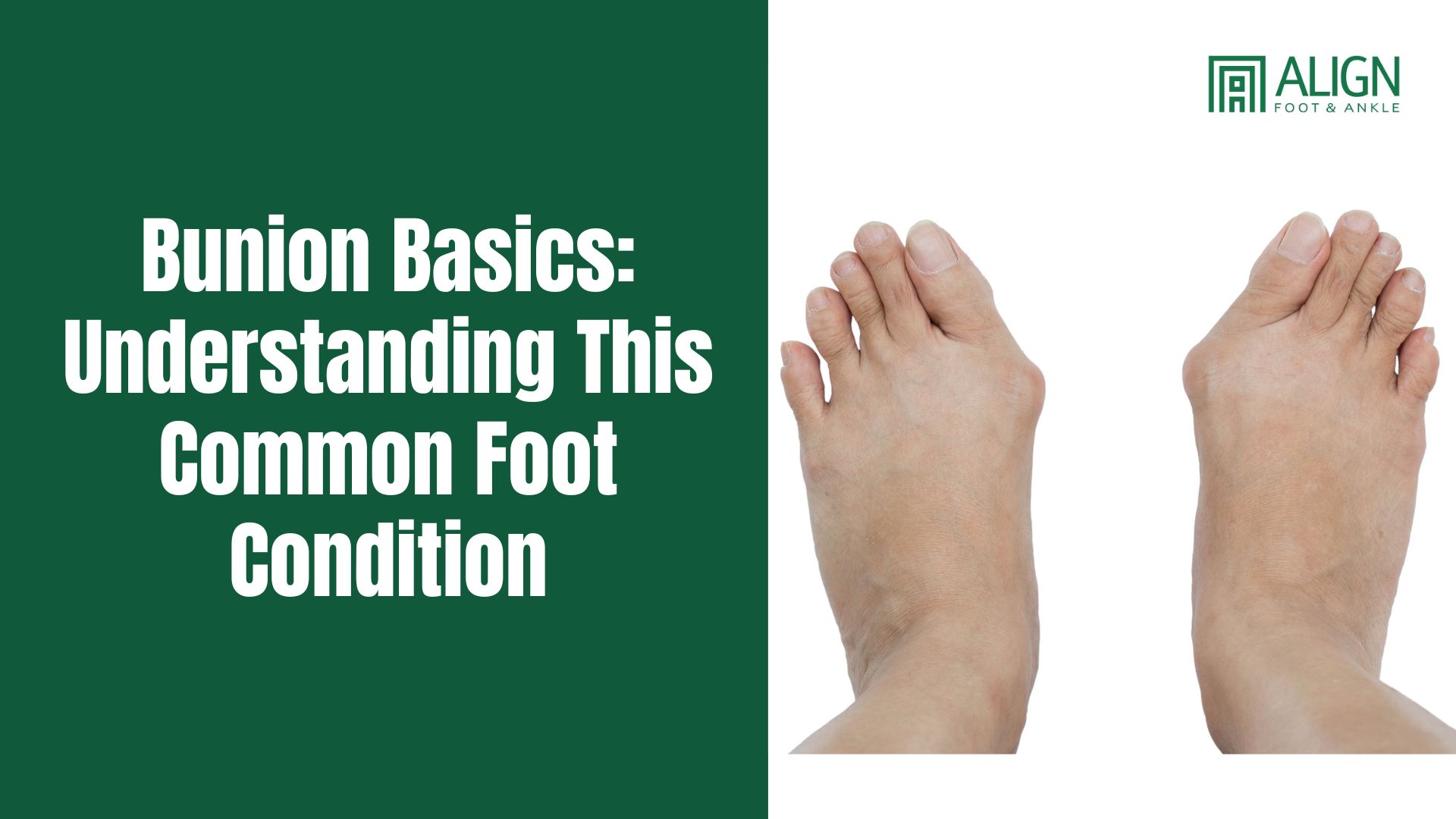Bunion Basics: Understanding This Common Foot Condition
Bunions are one of the most common foot problems, affecting millions of people worldwide. But what exactly are bunions, what causes them, and how can they be treated? This blog post will cover everything you need to know about these pesky bumps on the side of your feet.
What is a Bunion?
A bunion is a bony deformity that develops at the base of the big toe, where the toe joins the foot. It appears as a large, painful bump on the side of the foot. The medical term for a bunion is hallux valgus.
As a bunion forms, the big toe begins to point inwards towards the other toes. This abnormal positioning puts pressure on the joint at the base of the big toe, causing it to stick outwards and form the characteristic bunion bump.
Causes of Bunions
There are several potential causes of bunions, including:
- Genetics: Some people simply inherit feet that are more prone to developing bunions due to their bone structure.
- Foot Structure: Certain foot shapes, such as flat feet or low arches, can contribute to the development of bunions.
- Footwear: Wearing shoes that are too tight, narrow, or have high heels can force the toes into an unnatural position over time, leading to bunion formation.
- Arthritis: Inflammatory conditions like rheumatoid arthritis can increase bunion risk.
- Injury: Foot or toe injuries may also contribute to bunion development.
Bunion Symptoms
The telltale sign of a bunion is the visible bump on the side of the foot at the base of the big toe. But bunions can also cause:
- Pain or soreness around the big toe joint
- Swelling, redness or inflammation
- Restricted movement of the big toe
- Corns or calluses from friction on the bump
- Irritation of the bump rubbing against shoes
Treatment Options
Conservative Treatments
- Wearing wider shoes with a wider toe box and plenty of toe room
- Orthotics may be useful in controlling foot function and may reduce symptoms and prevent worsening of the bunion. We offer custom shoe inserts at our clinic using gait plate and 3-D scanning technology.
- Using bunion pads or splints to temporarily reposition the toe can offer some relief, but will not undo the changes
- Physical Therapy is often used to provide relief of the inflammation and bunion pain by implementing specific exercises and stretches that can strengthen the muscles around the bunion and improve joint mobility.
- Taking over-the-counter anti-inflammatory medication
- Icing the bunion to reduce swelling
- We offer MLS/Remy laser therapy at our clinic that aids in reducing pain and inflammation of the bunion.
- Steroid injections or regenerative therapy may be an option to relieve pain and inflammation
Minimally Invasive Surgery at Align Foot & Ankle
For severe bunions that don’t respond to conservative care, surgery may be recommended to realign the bones and remove the bunion bump. Minimally invasive surgery is an innovative approach that allows Dr. Ho-Ellsworth to correct foot abnormalities through tiny incisions right here in our office.
Advantages of MIS may include:
- Less scarring
- Reduced pain and swelling
- Faster recovery
- Early weight-bearing
- Lower infection risk
- Quicker return to work and daily activities
The MIS Process
Minimally invasive bunion surgery can be performed right in Align Foot & Ankle’s in-office surgical suite, under local anesthesia. During the procedure, Dr. Ho-Ellsworth creates the small incisions to access the bunions. She then inserts specialized surgical tools through these tiny openings to make the necessary corrections, followed by splinting of the toe into the correct alignment and dressings. Most people who undergo traditional surgery have long incisions, a great deal of pain, and a prolonged recovery period. With the MIS approach, you can avoid all of those things while still getting the results you want.
Schedule Your Consultation
If you’re struggling with bunions, the team at Align Foot & Ankle is here to help. Call our office at 512-882-4911 or book your appointment online to learn more about options and address your bunion pain. We’re dedicated to getting you back on your feet and living your best life.Don’t forget to follow us on TikTok, Instagram, and Facebook for valuable insights and updates on foot and ankle health.



